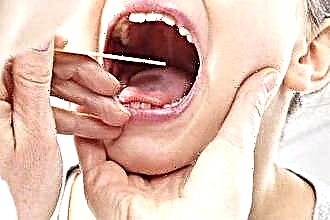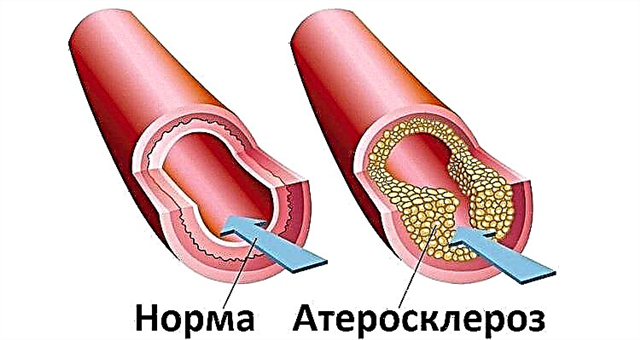Ear cleaning is a set of hygienic measures designed to cleanse the external auditory canal and auricle from contamination. Correct implementation of hygiene procedures prevents the formation of sulfur plugs and the development of diseases. It should be remembered that healthy ears are capable of self-cleaning; therefore, regular toilet of the ear canal can cause a decrease in local immunity.
According to statistics, more than 30% of patients visiting an otolaryngologist are faced with blockage of the external auditory canal with a sulfur plug. However, its formation in most cases is caused not by a lack of hygiene, but by too frequent and improper hygiene measures. To prevent the development of otitis externa, hearing loss and damage to the eardrum, the ear canal should be treated in accordance with the rules recommended by specialists.
About self-cleaning ears

Should I clean my ears? According to experts, ear cleaning should be done much less frequently than is commonly believed. This is due to the body's ability to self-purify and evacuate sulfur masses, keratinized cells of the epidermis and dirt from the external ear canal.
The auditory canal consists of two bony and membranous-cartilaginous sections. The first is located close to the tympanic membrane, therefore it does not contain hairs and glands of external secretion. The membranous-cartilaginous region, located closer to the auricle, contains a large number of hairs and more than 2000 glands. In the absence of malfunctions in the endocrine system, the glands produce up to 20 mg of sulfur per month.
Sulfur performs several functions, while the main one is to protect the organ of hearing from the negative effects of exogenous factors. As the sulfur masses accumulate, they move to the auricle, which is due to the natural movement of the temporomandibular joint, which is located near the base of the auricle. During conversation and chewing of food, sulfur is gradually evacuated from the ear canal, and does not clog it.
What happens if you don't clean your ears? Experts boldly answer that nothing catastrophic will happen. Moreover, the abuse of hygiene procedures can only contribute to the formation of a plug. When using cotton swabs, turundas and other accessories, earwax is pushed behind the isthmus connecting the bony and membranous-cartilaginous parts of the auditory canal.
Too frequent cleaning of the ears leads to compaction of sulfur masses and the formation of a dense plug.
About ear sticks

Can I clean my ears with cotton swabs? In medical practice, umbrella-tampons (tupffers) are used during surgical procedures. With their help, hard-to-reach cavities, fistulas and surgical wounds are drained. In everyday life, cotton swabs have been used relatively recently. And as practice shows, they do more harm than good.
Important! Do not clean the ear canals with chopsticks if there are abrasions or scratches. This can cause the development of limited or diffuse otitis media.
Experts warn that you cannot clean the ear canal using non-sterile sticks. This can lead to pushing the sulfur masses into the ear canal and the development of opportunistic microorganisms. In extreme cases, cosmetic devices are used to dry the mouth of the external auditory canal after shampooing.
Cotton buds can be used for the following purposes:
- treatment of wounds with medicinal solutions;
- removal of moisture in hard-to-reach places;
- removal of makeup residues.
To clean your ears, you can use special cotton swabs with stops. They are typically used to remove moisture and sulfur in infants. Sterile swabs on one side have cotton ball-shaped restraints that prevent the stick from deeply penetrating into the auditory canal.
Ear toilet in newborns
Despite the warnings described above, it is imperative to clean your ears periodically. How often should you clean your ears? It should be noted right away that basic processing of the auricle and the area behind it should be done daily. However, it is advisable to cleanse the auditory canal in newborns no more than 1 time in 10 days.
How to clean your ears properly? It is more advisable to carry out hygienic measures after breastfeeding. As already mentioned, as a result of the movement of the temporomandibular joints, sulfur masses move to the auricle, which contributes to the unhindered and rapid removal of impurities. Cleaning your ears at home is done as follows:
- wipe the auricle with a cotton pad dipped in boiled water;
- form a turunda out of cotton wool or gauze and moisten it in water;
- gently clean the ear canal with a damp swab;
- blot the auricle with a clean, dry towel.

When bathing, it is advisable to put a cotton swab into the external auditory canal to prevent moisture penetration into the hearing organ. Due to the reduced reactivity of the immune system in children, the ingress of water into the ear canal can lead to an inflammatory process.
Cleaning the ears of children
How often should I clean my children's ears? Purposeful treatment of the ear canal should be carried out no more than 1 time per month. However, experts recommend examining the ears at least once a week. With dysfunction of the sulfur glands, excessive formation of liquid secretion is possible, which is fraught with blockage of the auditory canal and hearing loss.
For preventive purposes, hygiene procedures are carried out using 3% hydrogen peroxide. How do I clean my ears at home? To process the auditory canal, you need to do the following:
- warm a bottle of hydrogen peroxide in your hands;
- drip 3 drops of the drug into the ear canal;
- after 10 minutes, remove the liquid with a cotton swab.
With the development of purulent otitis media, drugs cannot be instilled into the auditory canal. This will irritate the middle ear mucosa and cause swelling. How can you clean your ears in this case? To remove serous and purulent exudate, gauze turundas soaked in diluted boric alcohol or hydrogen peroxide are used. Slightly pulling the auricle, a wet tourniquet is carried along the edge of the ear canal to ensure the unhindered flow of purulent masses.
Removing the plug
Do I need to clean my ears when a plug occurs? As a rule, attempts to independently remove sulfur plugs lead to injuries and aggravation of the condition. To avoid negative consequences, it is advisable to use cerumenolytics, heated vegetable oil or petroleum jelly for the procedure. How to clean ear plugs?
- drip 3-4 drops of the warmed-up preparation into the congested ear;
- cover the ear canal with a cotton swab for 40 minutes;
- turn the child's head so that the affected ear is on the bottom;
- remove the cotton swab and remove the remaining sulfur with a cotton swab dipped in hydrogen peroxide.
If the cork does not soften the first time, do not use tweezers, a toothpick, or any other sharp object to remove it. Perform hygiene procedures 2 times a day for several days until the sulfur softens.
Hygiene for adults
The production of sulfuric secretion in the ear of an adult occurs constantly, therefore, experts recommend performing hygienic procedures daily.How do I clean my ears? To prevent the accumulation of sulfur, washing is carried out in accordance with the following algorithm:
- wash your hands with antibacterial soap;
- slightly tilting your head down, lather the auricle;
- insert a soapy little finger into the ear canal;
- rinse the auricle with warm running water;
- blot the auricle with a towel.
In case of severe ear contamination, before carrying out water procedures, it is advisable to clean the auricle and the mouth of the auditory canal with a cotton swab dipped in boiled water or hydrogen peroxide.
For the prevention of ear pathologies, you need to be examined by an otolaryngologist at least once a year. In 70% of cases, patients are unaware of the accumulation of excess sulfur in the ears. Timely referral to a specialist prevents complete blockage of the ear canal and the passage of an unpleasant procedure for its cleansing.
Precautionary measures
Before you clean your ear with turunda or special sticks, you should familiarize yourself with the nuances of carrying out hygienic manipulations. To avoid damage to the skin in the ear canal or perforation of the ear membrane, you should adhere to the following rules:
- never pour undiluted alcohol solutions into an inflamed ear;
- do not clean with cotton swabs if there are abrasions and scratches in the ear canal;
- cleaning the ears with peroxide should be carried out no more than 1 time in 7-10 days;
- in case of insufficient formation of sulfur in the ear 1-2 times a week, instill 2 drops of camphor oil into the ear canal;
- never use metal objects, toothpicks or matches for cleaning.
Before cleaning a young child's ear, consult a doctor. He will tell you about the features and the correct technique of the procedure, which will prevent the occurrence of injuries.



